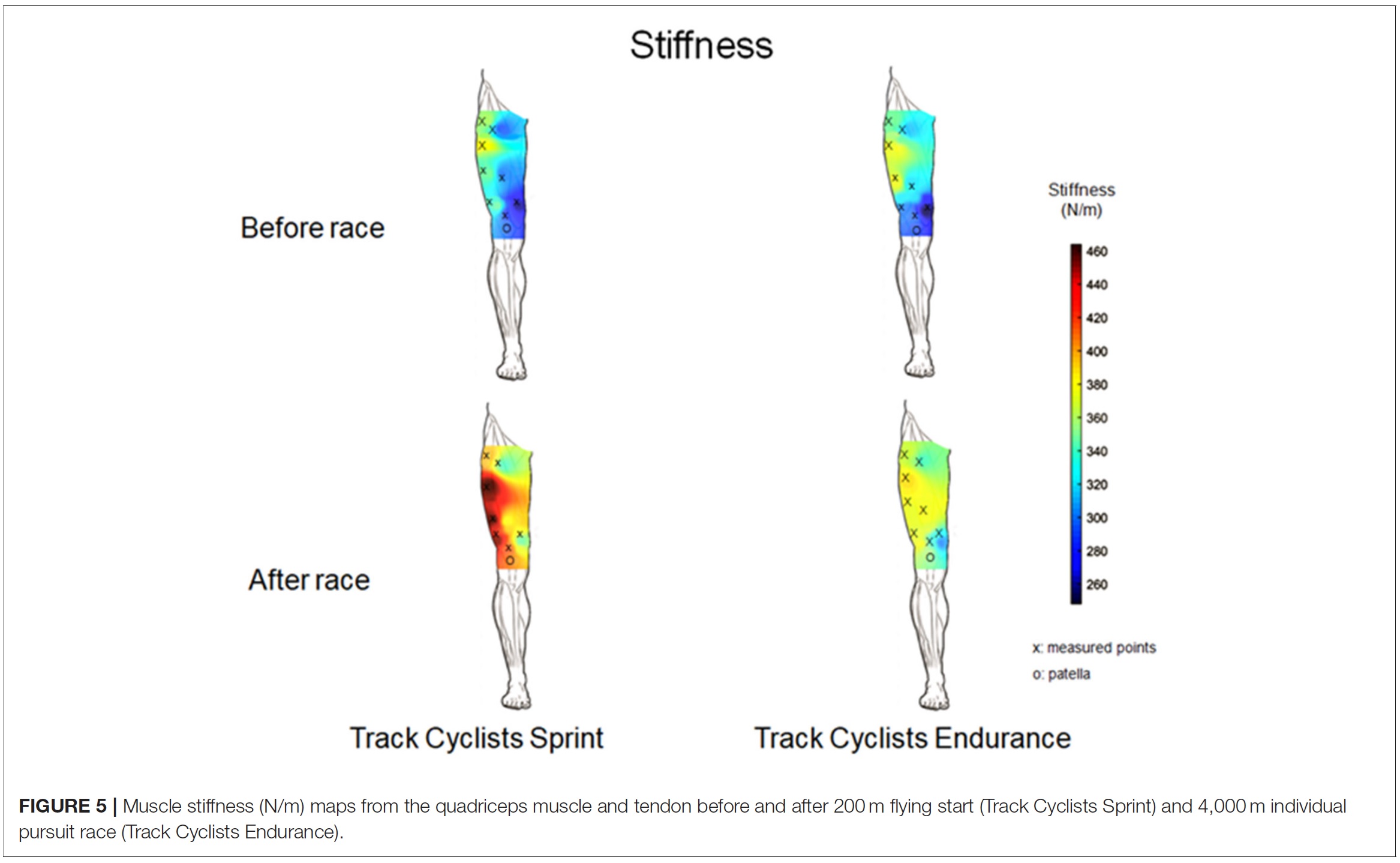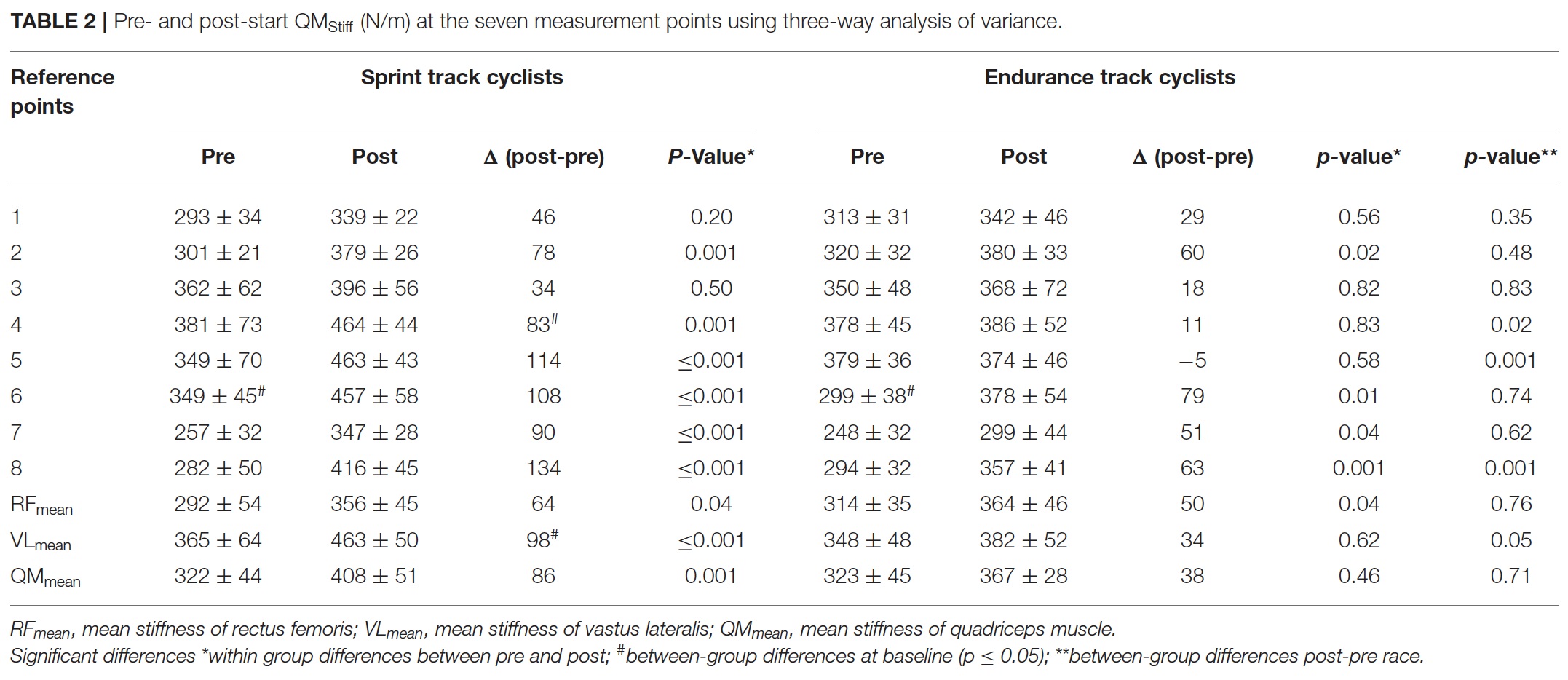Publications

Quadriceps and Patellar Tendon Thickness and Stiffness in Elite Track Cyclists: An Ultrasonographic and Myotonometric Evaluation
Authors: Sebastian Klich 1, Krzysztof Ficek 2, 3, Igor Krymski 4, Andrzej Klimek 5, Adam Kawczynski 1, Pascal Madeleine 6, Cesar Fernandez-de-las-Penas 7, 8
Affiliations:
- Department of Paralympic Sport, University School of Physical Education in Wroclaw, Wroclaw, Poland
- Department of Physiotherapy, Academy of Physical Education in Katowice, Katowice, Poland
- Galen Orthopedic Center, Bierun, Poland
- Polish Cycling Federation, Pruszkow, Poland
- Biomedical Science Institute, University School of Physical Education in Krakow, Krakow, Poland
- Department of Health Science and Technology, Sport Sciences—Performance and Technology, Aalborg University, Aalborg, Denmark
- Department of Physical Therapy, Occupational Therapy, Rehabilitation, and Physical Medicine, Universidad Rey Juan Carlos, Alcorcon, Spain
- Catedra Institucional en Docencia, Clanica e Investigacion en Fisioterapia: Terapia Manual, Puncion Seca y Ejercicio Terapeutico, Universidad Rey Juan Carlos, Alcorcon, Spain
Journal: Frontiers in Physiology - December 2020, Volume 11, Article 607208 (DOI: 10.3389/fphys.2020.607208)
-
Field & Applications:
- Sport
- Muscle development / Performance
- Fatigue / Overtraining
- Injury prevention
- Reliability
Track cyclists are required to perform short- and long-term efforts during sprint and endurance race events, respectively. The 200 m flying sprint races require maximal power output and anaerobic capacity, while the 4,000 m pursuit cyclists demand a high level of aerobic capacity.
Our goal was to investigate spatial changes in morphological and mechanical properties displayed using 3D topographical maps of the quadriceps muscle and tendons after 200 m flying start and 4,000 m individual pursuit race in elite track cyclists.
We hypothesized a non-uniform distribution of the changes in the quadriceps muscle stiffness (QMstiff), and acute alterations in quadriceps tendon (QTthick) and patellar tendon (PTthick) thickness.
Fifteen men elite sprint and 15 elite men endurance track cyclists participated. Sprint track cyclists participated in a 200 m flying start, while endurance track cyclists in 4,000 m individual pursuit. Outcomes including QTthick (5–10–15 mm proximal to the upper edge of the patella), PTthick (5–10–15–20 mm inferior to the apex of the patella)—using ultrasonography evaluation, QMstiff, and quadriceps tendon stiffness (QTstiff) were measured according to anatomically defined locations (point 1–8) and patellar tendon stiffness (PTstiff)—using myotonometry, measured in a midway point between the patella distal and the tuberosity of tibial.
All parameters were assessed before and after (up to 5 min) the 200 m or 4,000 m events. Sprint track cyclists had significantly larger QTthick and PTthick than endurance track cyclists. Post-hoc analysis showed significant spatial differences in QMstiff between rectus femoris, vastus lateralis, and vastus medialis in sprint track cyclists. At before race, sprint track cyclists presented significantly higher mean QTthick and PTthick, and higher QMstiff and the QTstiff, as compared with the endurance track cyclists. The observed changes in PTThick and QTThick were mostly related to adaptation-based vascularity and hypertrophy processes.
The current study suggests that assessments using both ultrasonography and myotonometry provides crucial information about tendons and muscles properties and their acute adaptation to exercise. Higher stiffness in sprint compared with endurance track cyclists at baseline seems to highlight alterations in mechanical properties of the tendon and muscle that could lead to overuse injuries.
Keywords: tendon, thickness, stiffness, maps, track cycling


This study reported for the first time changes in morphological and mechanical properties, represented by tendon thickness and stiffness. Moreover, our study showed spatial heterogeneity of tendons thickness and stiffness presented by 3D topographical maps after track cycling competition.
Sprint track cyclists exhibited significantly higher post-pre differences in thickness and stiffness of QT and PT, as compared with endurance track cyclists. Moreover, the spatial differences in muscle stiffness and tendon thickness reported for both groups might be associated also with loading adaptation, and thus adaptation-based vascularity and hypertrophy processes. Higher stiffness in sprint compared with endurance track cyclists at baseline seems to highlight alterations in mechanical properties of the tendon and muscle that could lead to overuse injuries.
The current study suggests that assessments using both ultrasonography and myotonometry provides crucial information about tendons and muscles properties and their acute adaptation to exercise.


